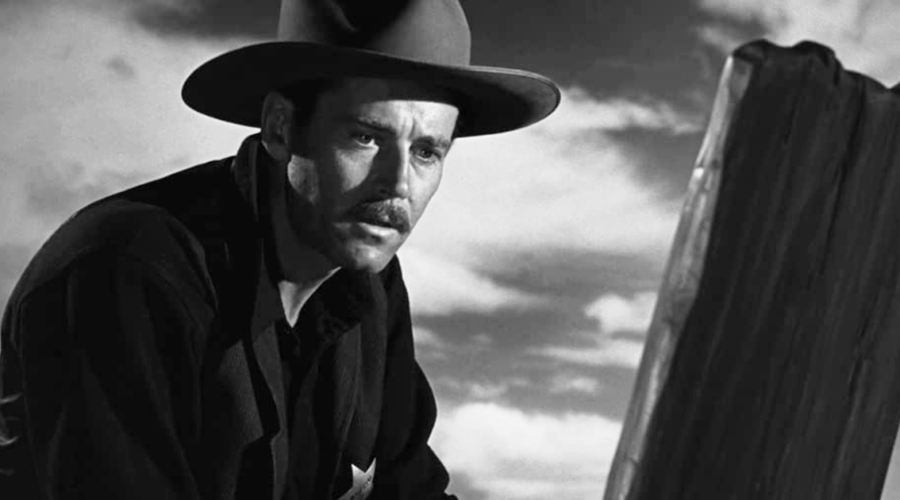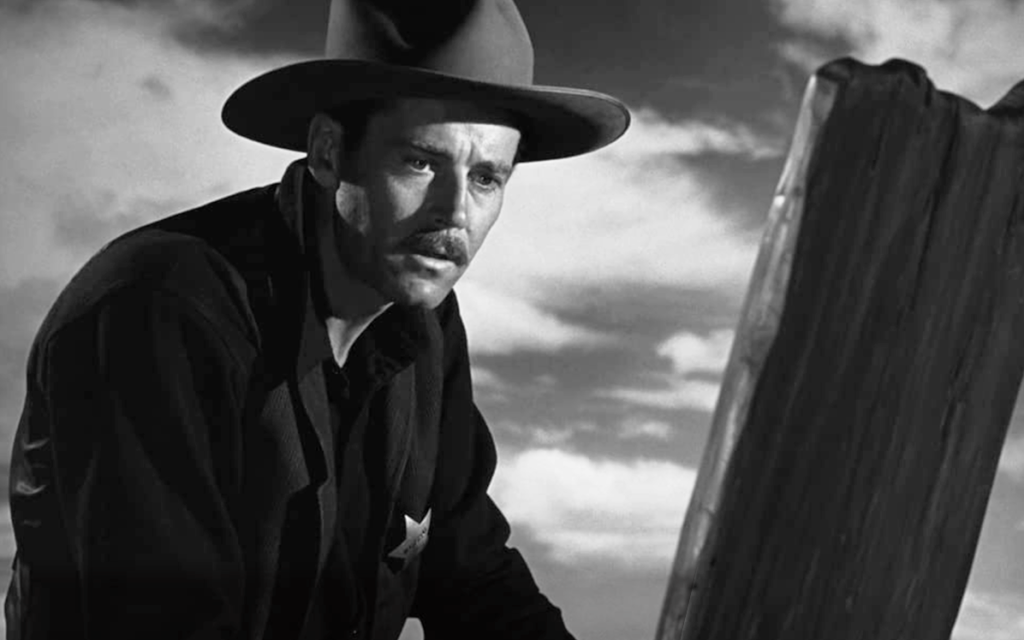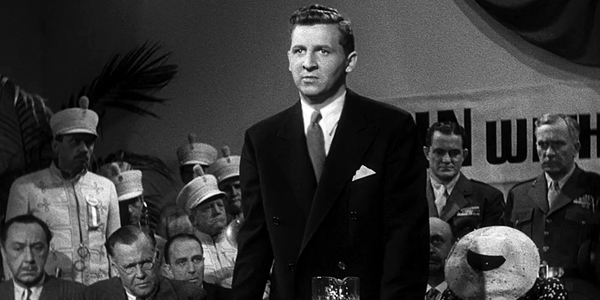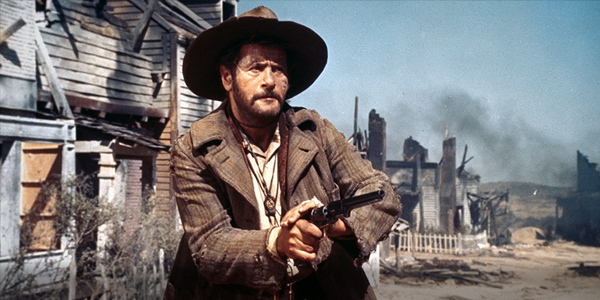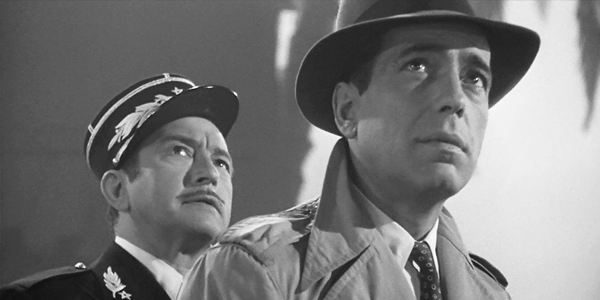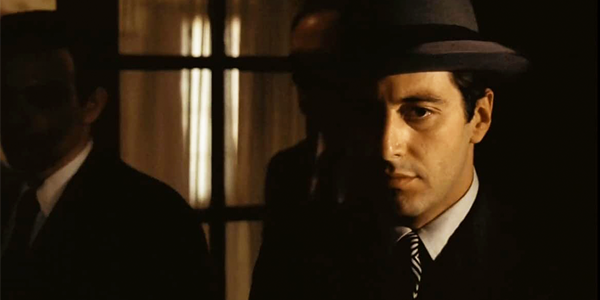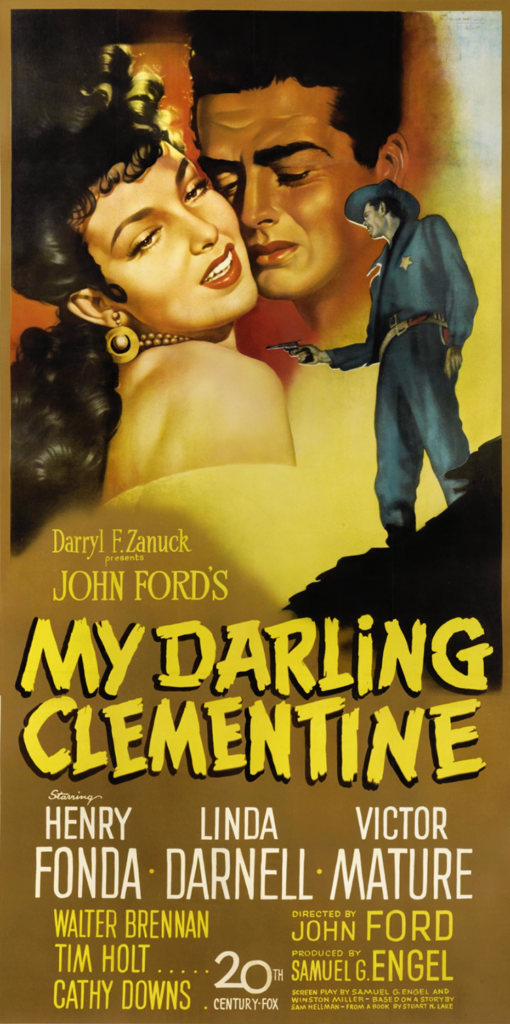Review: My Darling Clementine
also on Cineluxe
Sign up for our monthly newsletter
to stay up to date on Cineluxe
Often eclipsed by the more iconic Stagecoach and The Searchers, this lower-key approach to the western proves to be John Ford’s most satisfying take on the genre
by Michael Gaughn
November 14, 2022
I’m always wary of “best of” lists because they’re near always just a way to coerce a consensus, usually for institutional or marketing purposes, and rarely have much to do with the actual quality of whatever’s listed. But it’s hard to understand the importance of My Darling Clementine without going there, even if just a little. My favorite John Ford film, I would place Clementine just slightly above Young Mr. Lincoln and Fort Apache, partly because of its deceptively loose, almost documentary style and episodic structure, which have helped keep it limber and relevant. While I admire Stagecoach and The Searchers, I just don’t have the unalloyed affection for them that I have for those other three.
I would also humbly suggest that Clementine is the best western ever made—exactly because it isn’t epic and mythic but intimate and, that dread word, poetic. Anything shot in Monument Valley is inevitably going to have an epic feel, and there are moments when Ford gives the Academy-ratio frame the grandeur of widescreen. But he never lingers there for the sake of effect, instead devoting almost all his attention to developing his core group of characters, making sure they’re never eclipsed by the setting and that nothing allegorical or mythic distorts their human scale.
He also keeps the film rooted in history, having it revolve around the actual town of Tombstone and the actual figures of the Earps, Clantons, and Doc Holliday, being careful to keep all the elements in proportion. Is it accurate? Not really—or not much at all. But rather than stay pedantically true to the facts, it stays true to the feel of the facts. This isn’t how history actually was but how we want it and need it to be.
Maybe the biggest reason for the film’s strength and durability, its glue, is its grounding in process. Ford doesn’t underline it but Clementine’s not just armature but foundation lies in its portrayal of Tombstone’s evolution from frontier outpost to something resembling a civilized town and of how Wyatt Earp and Doc Holliday both effect and are affected by that maturation, which makes the film much richer than if the town had just been used as a backdrop.
The most startling thing about Clementine, though, might be its look, which is often stark and gritty with naturalistic light but filled with grace notes and, especially in nighttime shots, both exteriors and interiors, venturing into chiaroscuro. I suspect this was partly inspired by the documentaries Ford had been making for the government during the wartime years leading up to the filming, and that he deployed that style here to, again, keep things immediate, rooted in the characters, and seemingly real.
I was struck this time around by just how fluid film grammar had become by 1946 and by how the ‘40s represented its crestline. Every movie pre 1939, no matter how well done otherwise, feels a little awkward, hesitant, because the language was still forming, only to click suddenly and a little miraculously into place right at the end of that decade. The most confident expressions of American film followed, 10 years during which the core genres were forged and the execution of movies, for all its contrivance, felt effortless, with the results speaking with both power and grace, economically and, often, with surprising subtlety. Everything since has been a reaction to, a mostly futile rebellion against, what was established then.
You can even see this in the lighting—something seemingly secondary but actually core since it subliminally has a huge impact on how we experience a film as a whole. The technique had become so refined by the mid ‘40s that no moment in Clementine feels tainted by what we would usually think of us as the high-key Studio Era style. That doesn’t mean its look isn’t inherently theatrical, and there are times when Ford ventures surprisingly close to Expressionism, but it never draws attention to itself in a negative way—which makes it all the more curious that the next few decades—well into the ‘80s—would be defined by a much flatter technique often populated by numerous, blatantly artificial shadows.
Clementine adopts a variety of visual styles, but it shows the maturity of both film grammar and of Ford as a director that their use and juxtaposition are never jarring. Large sections of the film feel like he was back working with Greg Toland, with significant swaths of deep black, faces in shadow, and low muslin ceilings. But then there are those starker passages with their documentary immediacy, which Ford never tries to make feel vérité, instead carefully using composition and light—especially the consistently dramatic western skies—to style his tale.
Joe MacDonald’s mostly undistinguished résumé keeps him from being considered a top-rank cinematographer but he did have his moments, shooting Samuel Fuller’s classic noir Pickup on South Street and probably the two best color noirs, Fuller’s House of Bamboo and Henry Hathaway’s almost Sirkian Niagara. He also did outstanding work on Nicholas Ray’s Bigger Than Life and probably the best Frank Tashlin film, Will Success Spoil Rock Hunter? What he and Ford came up with for Clementine feels almost experimental, so fresh and responsive that you won’t encounter anything similar until more than a decade later with the emergence of the Nouvelle Vague.
Ford even extends that approach to the music. There are only a handful of cues and the ones that are there are just brief accents, not the usual wall-to-wall wash. Most effectively, there’s no score during the big dramatic scenes when almost any other filmmaker would be amassing great gobs of turgid Late Romantic noodling, relying on sheer musical tonnage to prop up their material. Fonda’s horseback pursuit of the stagecoach is just accompanied by the sound of charging hoofs, and the big shootout at the O.K. Corral is just isolated gunfire, spare dialogue, some whinnying from the corral, a passing stagecoach, and the wind.
This is probably Henry Fonda’s best performance, angular and laconic, of course, but making each line, look, movement, and gesture ring true—except in the somewhat discordant coda, which feels like a studio-mandated reshoot. It’s hard to believe a film this good could have Victor Mature near the top of the bill, and it’s a huge testament to Ford’s abilities that Mature’s presence doesn’t sink the whole thing. Linda Darnell specialized in playing what were once known as loose women, and she really works her patented trashiness here, but Ford even finds ways to draw expression from that laboriously manufactured erotic heat. (To Darnell’s credit, she pulls off Rex Harrison’s elegant, befuddled wife in Preston Sturges’ Unfaithfully Yours beautifully.) Walter Brennan, usually typecast as the cantankerous but lovable sidekick, is disturbingly strong as Clementine’s villain, his sadism all the more unsettling because Ford bases it in a believable devotion to his sons.
So, to sum up, you’ve got a western that’s likely the best in the genre primarily because it doesn’t use epic sweep, mythic iconography, or fussy pedantry to distance you from the action but instead creates a compelling you-are-there effect with disarming moments of grace. Its technique is still fresh and engaging because its nut has never been cracked. And the characters are finely and distinctly drawn while still feeling like organic members of a burgeoning community. (I just realized I could be describing a Robert Altman film, but this is 1946, not 1976, and Altman was too much of a cynic to ever lend his characters the warmth and rough charm and unexpected but apt layers Ford used to bestow on big and small alike like a benediction.)
Michael Gaughn—The Absolute Sound, The Perfect Vision, Wideband, Stereo Review, Sound & Vision, The Rayva Roundtable, marketing, product design, some theater designs, a couple TV shows, some commercials, and now this.
CLEMENTINE ON PRIME
I realize that, watching Clementine in its current form, you have to take a decent amount—but hopefully not too much—of what I wrote in the main text on faith. The transfer available in HD on Amazon Prime is, like so many older films, a bit of a visual mess, with some sequences sharp and with the proper tonal gradation and others great blotchy blobs of black and white. (One brief shot of a stagecoach racing through the desert is so blurry, contrasty, and stuttering it looks like badly damaged 8mm film.) I can only make assumptions here, but it would be hard to believe most of this was present in the movie as originally released and is likely a product of having to cobble together the transfer out of disparate elements, some of dubious quality.
That said, I also have to wonder if Clementine isn’t suffering a bit of the neglect that comes with manufactured consensus. Because The Searchers is big, widescreen, and Technicolor, unabashedly mythic and not afraid to beat its chest—and conspicuously, although mostly dubiously, influential—it’s been doted on in ways My Darling Clementine never has. True, Searchers is the more recent film (though by only 10 years), but it doesn’t seem completely unreasonable to think more can be done to steer Clementine back in the direction of the movie John Ford and Joe MacDonald created. (The recent 4K HDR releases of Casablanca and The Godfather show the downside of being iconic, so thoroughly scrubbed they no longer look much like film. Clementine even in its current state is the better experience because at least it still feels, from beginning to end, like a movie.)
Lastly, there’s something strange going on with the sound, with the music and effects track often mixed way higher than the dialogue. In the quiet scene where Henry Fonda delivers a monologue at the graveside of his younger brother, he’s almost completely drowned out by some strumming on a solo acoustic guitar. I don’t remember that being a problem with previous releases.
—M.G.
© 2023 Cineluxe LLC
